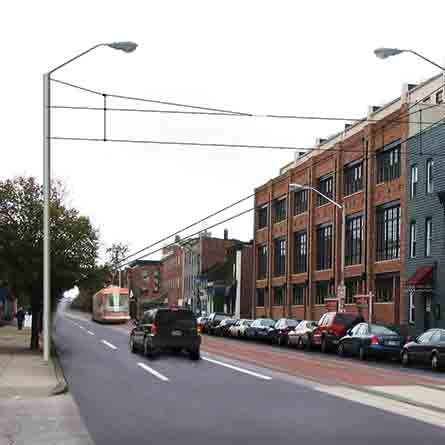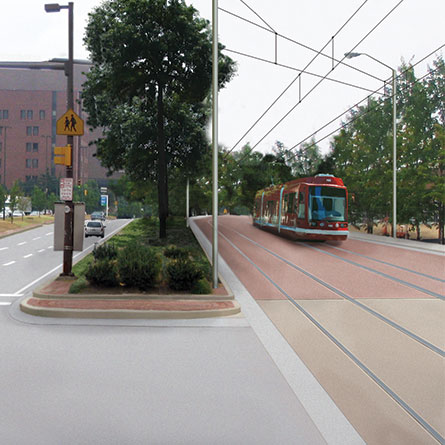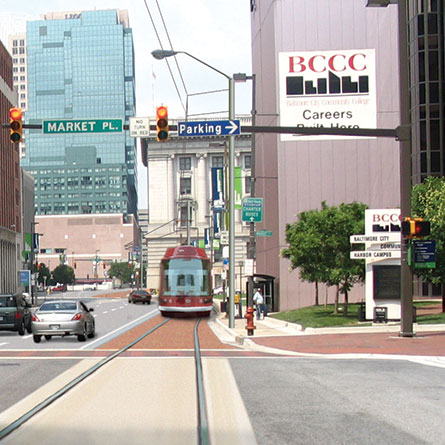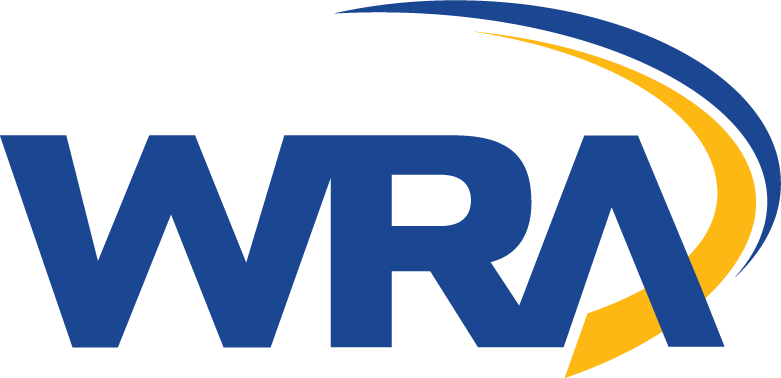Red Line Corridor Transit Study. Baltimore, Maryland.
The Red Line is an example of how WRA establishes longstanding client relations and moves projects from concept to implementation. In 2001, MTA selected WRA to perform data collection and analysis for development of rail line recommendations. After selection of a plan that included 66 miles of rail line and 68 new stations, the Red Line Corridor Transit study was initiated in 2002. Following the announcement of the Locally Preferred Alternative in 2009, WRA provided pre-preliminary engineering for two sections of the alignment and developed advanced concept plans for the maintenance/storage facility. The New Starts application was approved in Summer 2010 and the transition into Preliminary Engineering occurred in October 2010.



Services Performed
Project Highlights
Traffic
WRA supported Red Line planning efforts from the initial data collection and alternatives analyses to the refinement of the locally-preferred alternative. Specific efforts analyzed LRT/BRT options through Baltimore’s Fells Point, Canton, and Bayview areas, including over 70 signals and connectivity between local neighborhoods, I‐83, and I‐95.
Analysis and Modeling
Extensive Synchro modeling assessed overall operations; while area-specific VISUM modeling balanced regional traffic growth with localized diversions; while detailed VISSIM modeling simulated vehicular and transit traffic versus the influence of shared or exclusive transit lanes, transit stations, transit signal priority, and pedestrian/bicycle traffic.
Environmental
WRA provided planning and engineering services to the Maryland Transit Administration for this Draft Environmental Impact Statement. WRA staff developed the Purpose and Need Statement and initial technical evaluation measures that incorporated provisions of the National Environmental Policy Act (NEPA).
Technology Design
WRA developed a secure project management extranet site for exchange of technical information among all members of the consultant team.
Transportation Planning
WRA had a lead role in major public involvement programs, including several rounds of public workshops, the establishment and on-going coordination of five community working groups, the preparation of information for public newsletters, and the preparation of material for the public web site.
